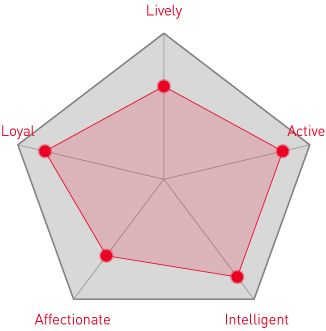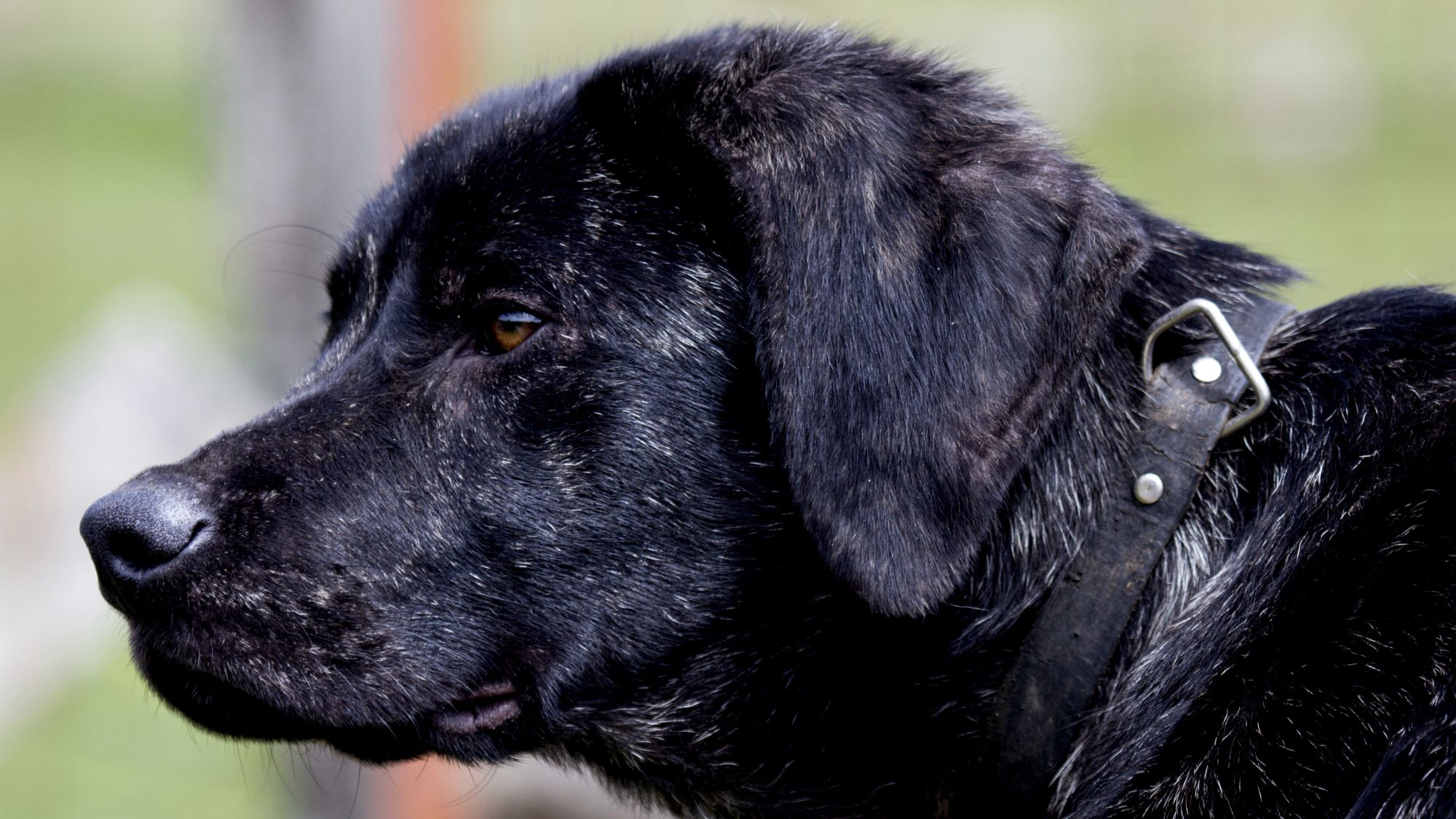
Let's talk Cão de Castro Laboreiros
The Cão de Castro Laboreiro is one of the hidden gems of Portugal. Bred to guard flocks way back when, they’re a true watchdog, an even-keeled and independent spirit with ceaseless endurance. This large breed will easily join the human gang but isn’t so keen on smaller animals at home as they may follow them in hot pursuit, where herding tendencies may come out. Known largely in their native land, the Cão de Castro Laboreiro is slowly gaining recognition by kennel clubs, surely due to the positive qualities found in this affable, smart breed.Official name: Cão de Castro Laboreiro
Other names: Portuguese Cattle Dog, Portuguese Watchdog, Castro Laboreiro Dog, Castro Laboreiro Livestock Guarding Dog
Origins: Portugal

| Drooling tendencies: |
|
Warm weather? | 
|
| Shedding level: | Suited to apartment living? | ||
| Energy Level (high, low, medium) *: | High | Family Pet?* |
 |
| Compatibility with other pets: |  |
Can stay alone?* |  |
* We advise against leaving pets alone for long stretches. Companionship can prevent emotional distress and destructive behaviour. Speak to your veterinarian for recommendations.
Every pet is different, even within a breed; this snapshot of this breed’s specifics should be taken as an indication.
For a happy, healthy and well-behaved pet, we recommend educating and socialising your pet as well as covering their basic welfare, social and behavioural needs.
Pets should never be left unsupervised with a child.
All domestic pets are sociable and prefer company. However, they can be taught to cope with solitude from an early age. Seek the advice of your veterinarian or trainer to help you do this.


| Baby age: | Birth to 2 months |
| Puppy age: | 2 to 15 months |
| Adult age: | 15 months to 5 years |
| Mature age: | 5 to 8 years |
| Senior age: | From 8 years |

1/7
Get to know the Cão de Castro Laboreiro
All you need to know about the breed
Boundless energy with affability to match, the Cão de Castro Laboreiro breed is little-known outside the Iberian Peninsula with a worldwide population hovering between 250 to 500 of these purebreds. They’re remarkably similar to a black Labrador Retriever (although their coat can be a variety of wolf-colour shades), but the Cão de Castro Laboreiro is a one and only.
Noted for their bravery – a history watching flocks will bring that out – the Cão de Castro Laboreiro is fearless, a trait they bring to the homefront with most anything you ask. The breed is equal parts guardian and faithful companion, along with being quite smart.
One possible downside to the Cão de Castro Laboreiro dog: Their loud bark. If neighbours live close, this may be something to think about. The breed can be trained early to respond in the best way possible to any situation.
The Cão de Castro Laboreiro can co-exist with canine friends if raised with them, but their prey drive is a touch elevated; watch them around smaller furry pals as they will have a tendency to chase. The Cão de Castro Laboreiro is known to be excellent with children – once trained around them – and the rest of the family unit, to whom they’re intensely devoted.

2/7
2 facts about Cão de Castro Laboreiros
1. The wanderer
As an outstanding watchdog, the Cão de Castro Laboreiro could be one to go exploring, if they feel like it, and amble off in the process. The breed has fairly high wanderlust so while outside, will need a very high and very strong fence to keep them free from harm. The Cão de Castro Laboreiro’s nonstop nature is a great asset but will need to be regulated, for sure.
2. Don’t need zzzzzs
While many dogs take to naptime like a bee to honey, the Cão de Castro Laboreiro isn’t one to need a ton of rest. They are incredibly active so like to get up and out, and aren’t very keen on sleeping in. They’d be pleased to have an owner who’s an early riser as well. Although definitely nocturnal, the Cão de Castro Laboreiro won’t always be the breed who’s snuggling up next to you on the couch
History of the breed
The small town of Castro Laboreiro in the northern part of Portugal is the namesake for the Cão de Castro Laboreiro. A mountainous region that was once quite remote produced a strapping breed who could handle the work there, developing into an expert shepherd dog and as a canine farmhand. Today’s breed has assimilated into the household as a trusted companion, so cherished are they in their native territory.
Said to exist in the area for centuries (their origin is hard to trace), the Cão de Castro Laboreiro breed held fast as a result of their sturdy character and robustness. Mentions started to be made about the breed in the 17th century with their first showing in 1914.
The first breed standard was written by the Portuguese Kennel Club in 1935. The Cão de Castro Laboreiro breed was officially recognised by the Fédération Cynologique Internationale in 1955 and by the United Kennel Club in 2006.

4/7
From head to tail
Physical characteristics of Cão de Castro Laboreiro
1. Ears
Medium-sized triangular ears, set fairly high, rounded tips.
2. Coat
Coarse, short, thick weather-resistant coat.
3. Body
Large body with deep chest, very muscular, somewhat rounded feet.

5/7
Things to look out for
From specific breed traits to a general health overview, here are some interesting facts about your Cão de Castro Laboreiro

6/7
Caring for your Cão de Castro Laboreiro
Grooming, training and exercise tips
A rough and tumble breed like the Cão de Castro Laboreiro has a coat to match, which makes their grooming routine fairly, well, routine. Brush the dead hair from their fur each week and only bathe them when really necessary. This is a dog that works outside a good deal so check their ears and eyes for debris. Trim their nails and brush their teeth regularly, too, preferably daily, or as much as they’ll let you. Exercising your Cão de Castro Laboreiro is as easy as opening the back door. Having land for them to roam on (if they are not used as a working dog) is essential, and taking them on a hike or long walk every day will be just fine with them. They will prefer to be off leash since their history was one of being left to wander tending to herds, but stay aware so they don’t wander off under your watch. The breed will need mental stimulation too to keep active, emotionally and physically. An agreeable manner means training the Cão de Castro Laboreiro is far from difficult, but they need a very assertive owner (to whom, FYI, they will most always only respond to); otherwise, this independent-minded breed has a tendency to buck the information imparted. Make sure to socialise them from early puppyhood so your Cão de Castro Laboreiro is always on their best behaviour.7/7
All about Cão de Castro Laboreiros
Not generally known outside of their native land, the Cão de Castro Laboreiro can count themselves among the world’s rarest breeds, with a worldwide population hovering between 250 to 500 dogs. The Cão de Castro Laboreiro dog is found aplenty along the west coast of Portugal though, their loyal character and all-around great demeanour making them a favourite in their home country over the ages.
As breeds go, the Cão de Castro Laboreiro is similar to many others in their spate of wonderful traits. Where they tend to be different is in their smarts: The Cão de Castro Laboreiro is incredibly intelligent, and can not only understand but memorise any commands given after approximately 20 repetitions.
Read more on this topic


How to adopt a dog

Things to consider before getting a dog
Sources
1 - Veterinary Centers of America https://vcahospitals.com/
2 - Royal Canin Dog Encyclopaedia. Ed 2010 and 2020
3 - Banfield Pet Hospital https://www.banfield.com/
4 - Royal Canin BHN Product Book
5 - American Kennel Club https://www.akc.org/